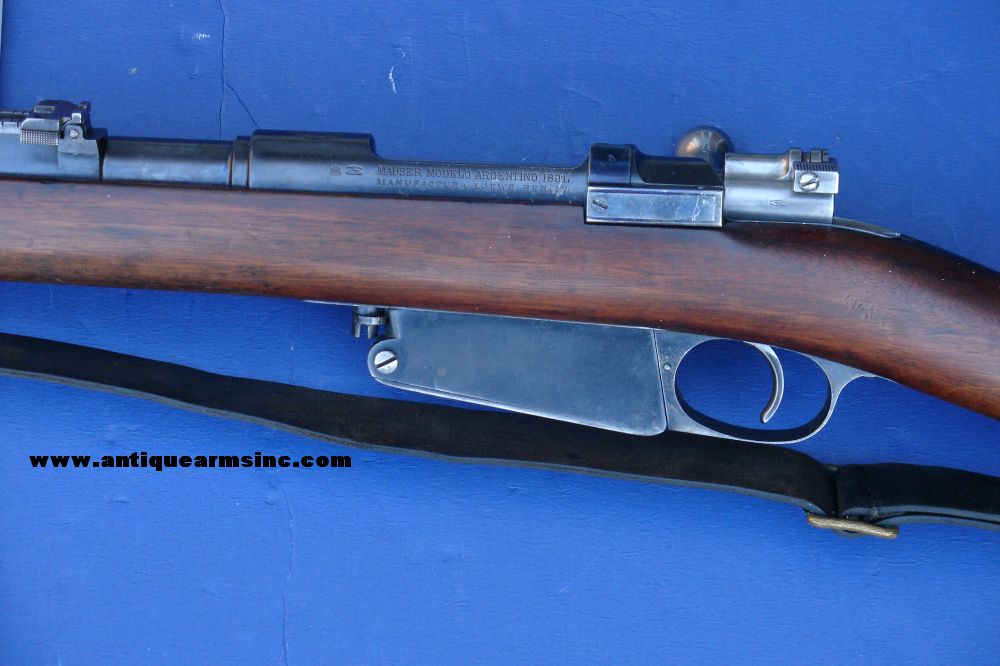
Sailors from the Argentine Navy carry the Model 1891 Mauser as part of honor guard duties. This is the Model 1916 quadrangular blade bayonet.Īlbum Properties. The same goes for the 1916 bayonet which is similiar to the Gendarmerie but uses a quadrangular blade rather then the T back. Post WW1 many of these bayonets were fitted w/smaller diameter muzzle rings for use w/the post WW1 1924 model Mausers w/o barrel jackets. This is a long t-back blade (similiar to the blade on the French Gras, this is an original 1916 model w/large diameter muzzle ring to fit the 1889 barrel jacket. This pic illustrates the carbine fitted w/the standard 1889 mauser infantry bayonet, the carbine bayonets also followed this configuration but came in a number of different blade lengths (all longer than the infantry) Note the staining running the length of the stock, may be a blood stain.
1891 ARGENTINE MAUSER MANUFACTURE DATES SERIAL NUMBER
This is a close-up of another inspectors marking on the bottom of the stock just in front of the front trigger guard screw which is at the right.īelieve the circular marking to be another inspectors markings, the 561 may be either a unit number or rifle rack number, the serial number of the rifle is stamped in full on the "flat" of the buttplate. The remains of the serial on the stock, this pic was taken thru a magnifying glass & is disappointingly unclear, the 1 & 44 in the serial can be seen clearly thru the glass but the rest are obscured. Also note the very heavy staining to the wood, in the receiver area, wrist & running down the left side of the stock. Here you can see the outline of the serial number on the stock, just below the receiver, above the magazine in front of the trigger. Note the barrel which prtrudes from the barrel jacket, the front sight mounted on a ring around the jacket & original cleaning rod, which is a fairly rare accessory to find on most of the WW1 Belgian Mausers. The front band is the same as the rifle & all the different Belgian WW1 mauser bayonets can be used, 1889 standard, 1916 Tback long blade, 1916 Gendarmerie & the various carbine models. The sight is mounted on the barrel jacket. This carbine is stamped "Manufacture D'Armes De L Etat" These rifles/carbines were matched by the serial number on the receiver, barrel jacket (which took the place of wooden handguards), bolt, mag bottom, buttplate & a small serial stamped on the left center area of the stock near the action. This was a developement of the earlier 1890 Turk/1891 Argentine Mauser design & utilized the same cartridge as the above & the 5 shot box magazine that protruded from the stock. On the right side of the butt these rifles/carbines had the Belgian acceptance stamp which was a circle w/mfg name & date, the cartouche is present on this rifle but is light, difficult to see in this pic, just ahead of that is another small circular stamp, which was an inspectors cartouche.Ī better closeup view of the acceptance cartouche (rather the remains of it)Ī closeup of the smaller marking forward of the acceptance cartouche in the stock, this was an inspectors marking. It also had a standard sling swivel attached to the center band (which is not present on this particular rifle).

The Artillery carbine version was a shortened variant of the infantry rifle, used the barrel jacket, lower sling swivel fittings of the rifle but had a turned down, checkered on bottom bolt handle. Carbine pictured ia a matching, original WW1 configuration carbine w/no mods.Īlbum by willyp. They were made in long rifle & various carbine configurations, the one illustrated here is a model 1889 Artillery carbine which was basically a carbine version of the standard infantry rifle. They were mfg in Belgium, England, by Birmingham & in the US by Hopkins & Allen.

The Mdl1889 was the standard Belgian rifle at the start of WW1. In 1889 Belgium adopted the 1889 Mauser rifle in 7.65cal, based on the earlier 1891 Argentine Mauser it utilized a barrel jacket similiar to the 1888 Gew rifle of Germany. Willyp | Home > Weapons of the world photo Albums >


 0 kommentar(er)
0 kommentar(er)
